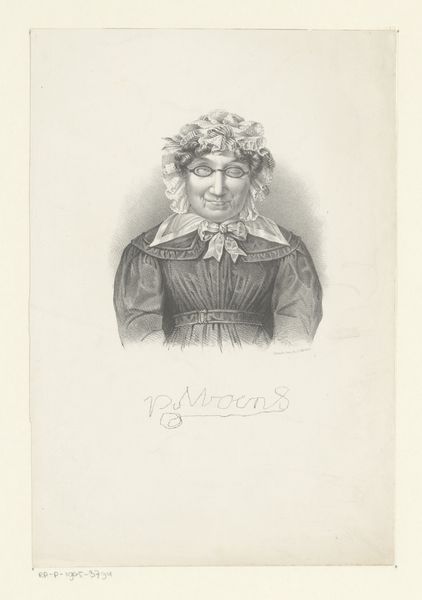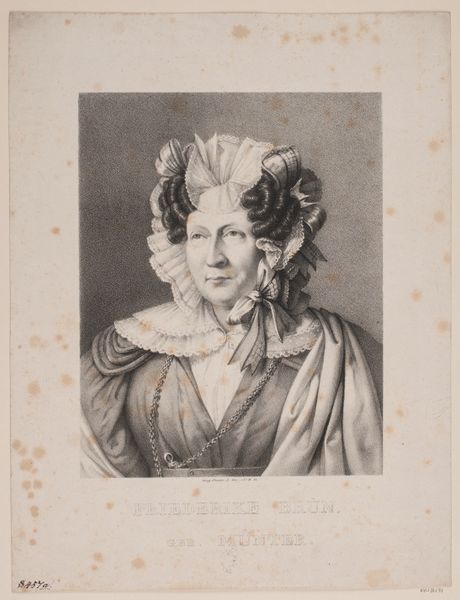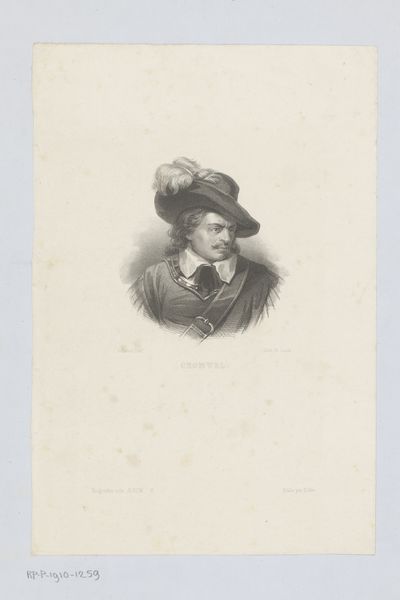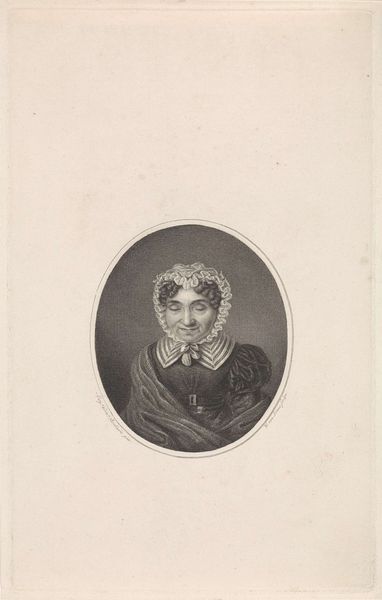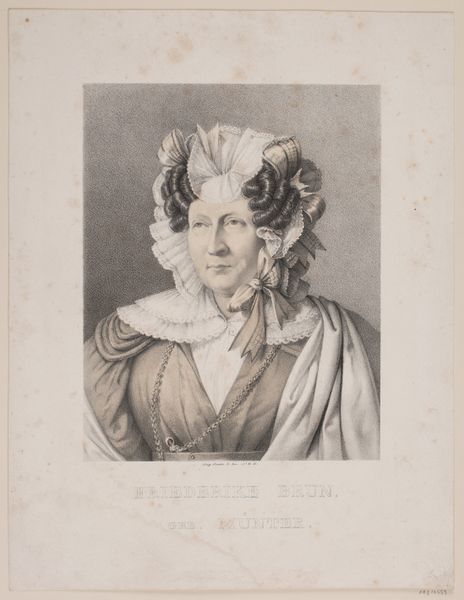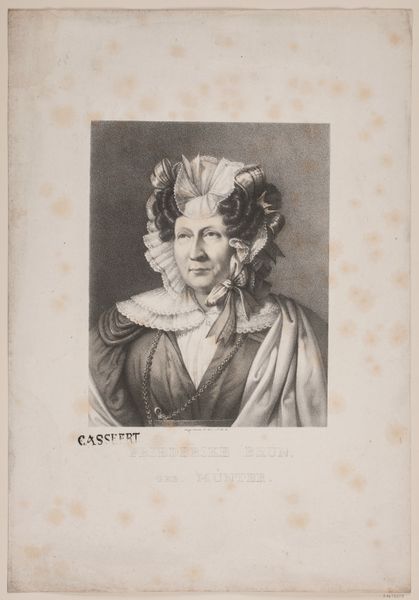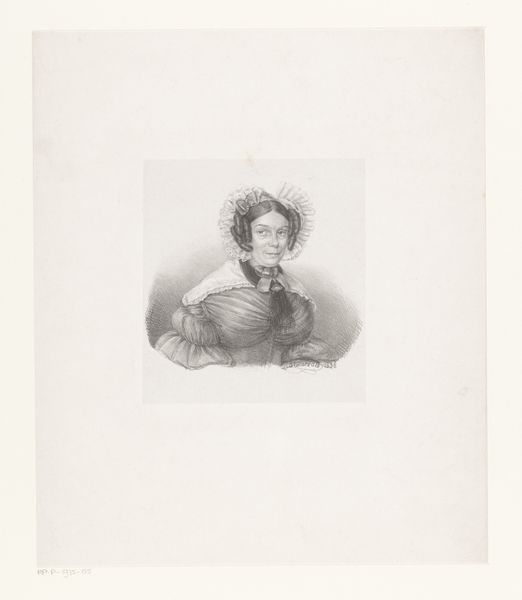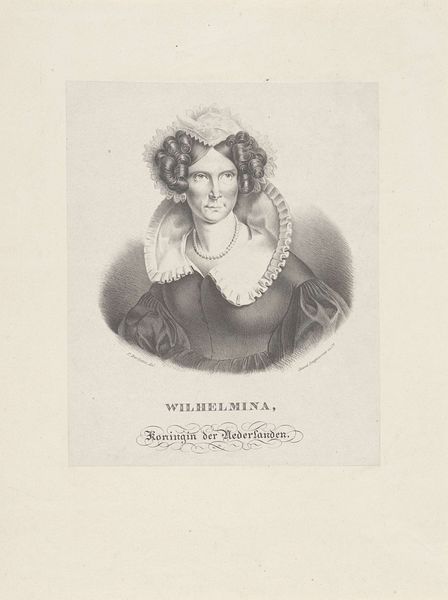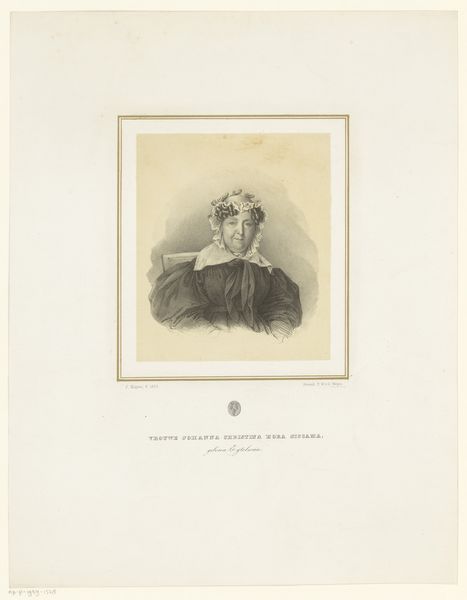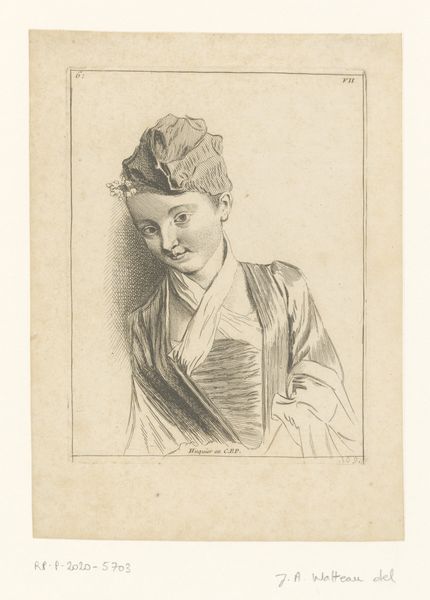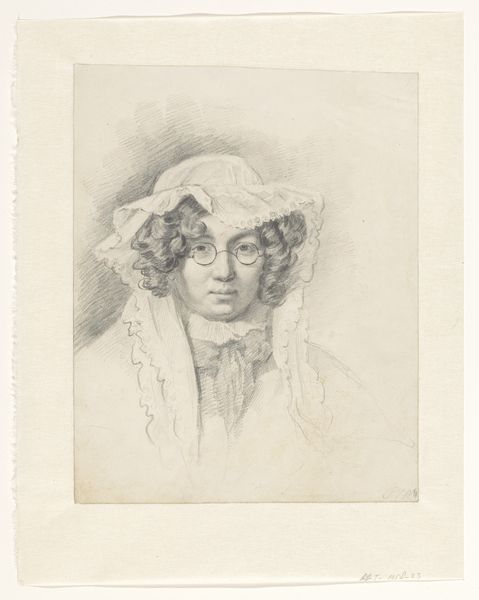
print, engraving
#
portrait
# print
#
history-painting
#
academic-art
#
engraving
Dimensions: height 260 mm, width 235 mm
Copyright: Rijks Museum: Open Domain
Michel Mourot created this portrait of Petronella Moens in the 19th century, using lithography. This printmaking technique depends on the contrast between greasy and water-receptive areas on a stone or metal plate. The matrix is prepared, inked, and then run through a press to transfer the image onto paper. Lithography was a relatively new medium at this time, having been invented just a few decades prior. It was quickly adopted for commercial printing because it allowed for the relatively easy reproduction of images and text, and it democratized access to imagery. Consider the labor involved: from quarrying the lithographic stone, to the skilled hand of the artist applying the image, to the press operator. Each stage contributed to the final product, embedding it with social and cultural meaning beyond the depicted likeness of Petronella Moens. The choice of lithography underscores the evolving relationship between art, industry, and accessibility during the 1800s.
Comments
No comments
Be the first to comment and join the conversation on the ultimate creative platform.
